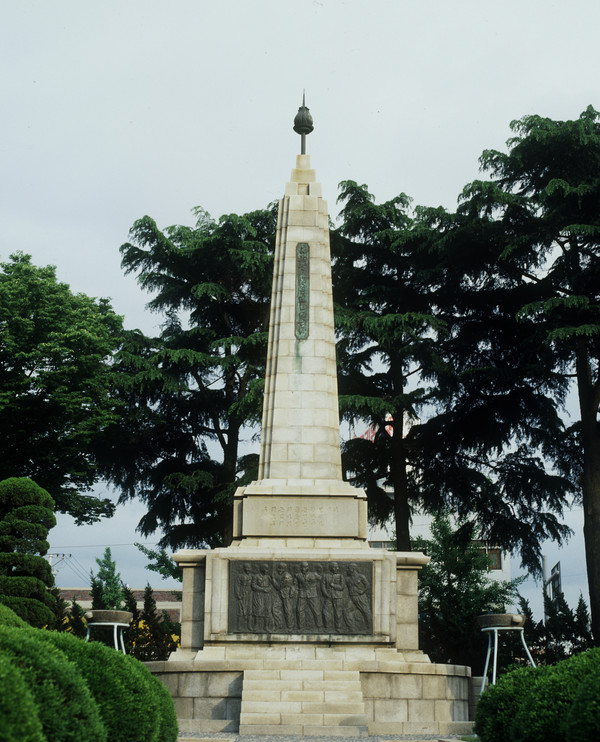November 3rd is Student Independence Movement Day, which commemorates the Gwangju Student Independence Movement that occurred on the same date in 1929. The Gwangju Student Independence Movement is a historic day when students from Gwangju took to the streets to actively shout for the independence of their nation. While greeting November, Korea Chronicle aims to delve into the detailed story of the Gwangju Student Independence Movement.

The Gwangju Student Independence Movement was not a spontaneous event. The Japanese Empire had implemented a limited practical education program aimed at cultivating a number of pro-Japanese Koreans who could cooperate with their governing. This suppressed education provided the bare minimum level of education necessary for individuals to become laborers and was far below the level of education Japanese students received. Even before the Gwangju Student Independence Movement of 1929, Gwangju students resisted such discriminatory education imposed by the Japanese Empire. The dedicated organization for the Gwangju Student Independence Movement, called the Seongjin-hoe, was established in November 1926, and led anti-Japanese activities with a shared spirit of anti-colonialism and national independence. Seongjin-hoe provided support to various student movements in the Gwangju region at the time. The student movements in the Gwangju region took the form of multiple schools forming alliances and going on strike. For instance, in 1927, in response to the excessive humiliation of Korean students by a Japanese physical education teacher, 15 students protested by shouting slogans like, "Implement education centered on Koreans, abolish slave education." Those incidents awakened the anti-Japanese sentiment among students, laying the groundwork for the large-scale Gwangju Student Independence Movement in November 1929.
The catalyst for the Gwangju Student Independence Movement was a small clash between Korean and Japanese students. In October 1929, at Na-joo Station, where the commuting train from Gwangju arrived, a few Japanese students harassed Korean female students, insulting, and taunting them by pulling their hair. The incident provoked a relative of one of the Korean girls, who was also a student at Gwangju High School, leading to a confrontation with the Japanese students. When the police arrived at the scene, they favored the Japanese students and assaulted the Korean students. This incident further fueled hostility between Korean and Japanese students, intensifying the anti-Japanese sentiment among Korean students. On November 3rd, the students of Gwangju High School finally initiated active protests. This day coincided with Meiji Day, celebrating the birthday of Emperor Meiji of Japan. After the Meiji Day commemorative event, the students of Gwangju High School refused to participate in the shrine visit[1]. 16 Japanese students attacked the Korean students, and the confrontation escalated. The Gwangju High School students returned to their school armed and determined to protest. Approximately 300 students marched through the street shouting "Hurray for the independence of Joseon”. This demonstration included students not only from Gwangju High School but also from Gwangju Agricultural School, Gwangju Teachers' College, and Gwangju Girls' High School[2]. The Japanese colonial authorities attempted to suppress this protest by closing schools temporarily, but this only allowed students to participate in the anti-Japanese movement more actively. Despite police repression and teacher interventions, student movement in Gwangju was temporarily halted. However, anti-Japanese sentiments spread to the surrounding areas of Gwangju and even expanded to Seoul in December. In conclusion, the Gwangju Student Independence Movement became the largest national struggle since the March 1st Movement of 1919, involving over 54,000 students from 194 schools nationwide.
In this way, the Gwangju Student Independence Movement evolved from a protest of Japan's discriminatory colonial education policies into a significant anti-Japanese struggle that ignited the national spirit. Ultimately, its significance lies in its nationwide expansion, sparking a sense of struggle among the Korean people. The fact that Gwangju students sensitively responded to the socio-political context of their time and developed a national independence movement is noteworthy. Through students’ voices the reality of Japan's cultural governance[3] in the 1920s was revealed. Overall, Gwangju students pointed out the issues of racial discrimination and the colonial education system that could be witnessed through the lens of a student, leading the way in the struggle for national independence. Their actions are appreciated for highlighting the problems of discrimination against Koreans and the exploitative colonial education system. Ultimately, it contributed to the national independence movement.

Despite the risks, the students participated in the protests to express their anti-Japanese spirit. Furthermore, the fact that a student-led anti-Japanese movement evolved into a nationwide movement carries significant importance. The efforts of these students can be witnessed today at the Gwangju Student Independence Movement Memorial Hall in Gwangju. It's crucial to remember that thanks to the courageous students of the past, modern Korea exists as it does today.
[1] During the Japanese colonial period, the Japanese forced Koreans to worship Japanese ancestral deities in shrines. Shrine worship was a colonial governance tool aimed at indoctrinating Koreans and exerting psychological control over them.
[2] Gwangju High School, Gwangju Agricultural School, Gwangju Teachers' College, and Gwangju Girls' High School is currently Gwangju Natural Science High School, Gwangju National University of Education, Chonnam Girl’s High School.
[3] Cultural governance was a new method introduced to suppress Korean resistance after the March 1st Movement in 1919. On the surface, it appeared to reduce discrimination against Koreans, but, it in fact served as a means of economic exploitation and the eradication of Korean culture.

